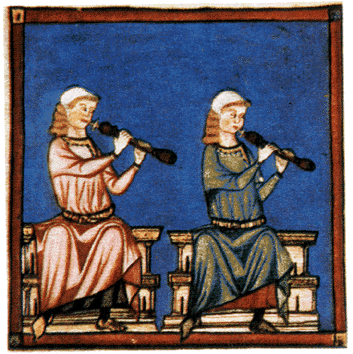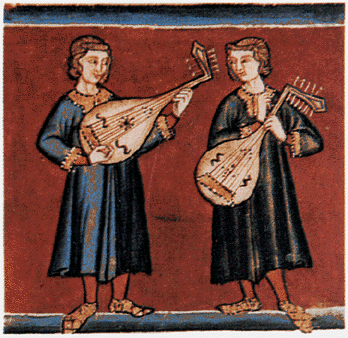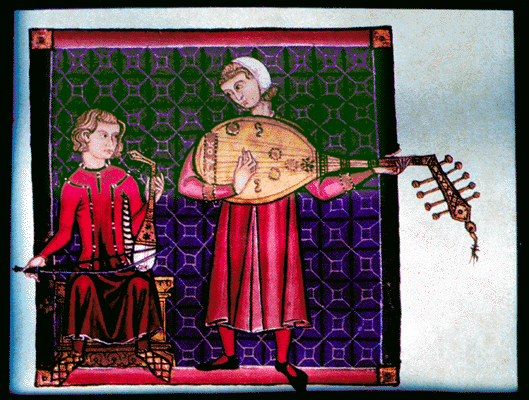


Alfonso X, El Sabio was
King of Castile and Leon in the second half of the thirteenth century. The
moniker arises from his progressive attitude towards education, law and
particularly to the fostering of scientific knowledge. He established a
translation school at Toledo which helped circulate knowledge from the Arab
world about the Ptolemeic cosmogony and the philosophy of the ancients
His greatest direct legacy comes from the commissioning (and part authorship) of the 425 poems with accompanying musical script that constitutes the largest body of solo (monophonic) songs from medieval times. Written in the Castilian lyrical language of Galacian-Portuguese the hymns, which include some chanting, are extremely diverse in metrical composition and all of them either mention or directly praise the Virgin Mary.
Today the work is spread between four codex that were written and illuminated in the 14th and 15th centuries. Information about this great body of work is spread haphazardly around the internet and reflects a dearth of scholarship about the three areas of its excellence, art, music and literature, despite being popular with medievalist musicians and many recordings having been made. In fact, it was recently reported that Oxford University have established a centre devoted to studying the Cantigas.
All but one of the images here come from a Japanese website which appears to have the largest number of illustrations (from the E codex).
If you have even a passing interest in world +/- medieval music, I would recommend listening to some samples.
This amazon page has a
few examples with a Moroccan orchestra, though I don't suppose that is the main reason
one senses influence from the Arab world. All of the tunes (and all the lyrics)
are available in midi format from this
French website - but the samples sound like they were made with an electronic synthesizer.
- The best site to see the illuminations, despite there not being high resolution images available.
- Further illuminations (and copies) in colour and black and white with higher resolution format (although I don't think they are better) and their homepage.
- This other French site has quite a few low quality images but they have what I presume is a scan of an actual manuscript page.
- A couple of images from another codex.
- English translation of some verses - Washington University.
- A fine general review of the Cantigas from the Minstrels' Guild of Drachenwald.
- Wikipedia: Cantigas de Santa Maria & Alfonso X.